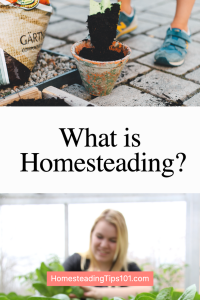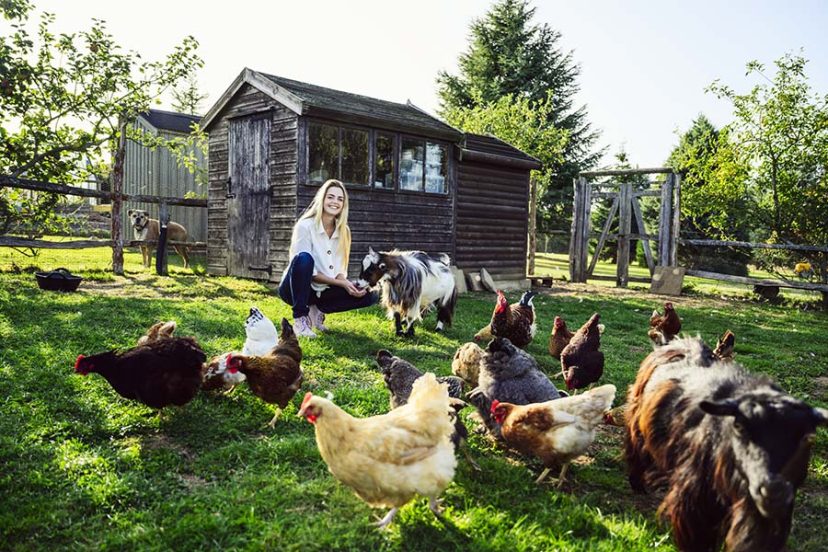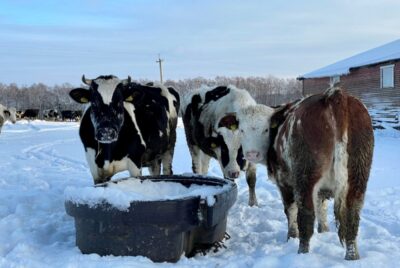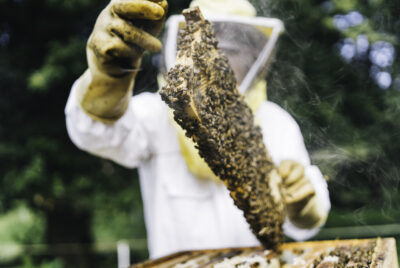What is Homesteading?
"We may earn a commission from purchases made using our links. Please see disclaimer."
As an enthusiast and advisor of homesteading, I’m excited to share with you the wonders of this self-sufficient lifestyle. Homesteading is a way of living that embraces self-reliance and sustainability. It involves creating a self-sustaining ecosystem on your property, where you grow your own food, raise animals, and reduce dependency on external resources. In this article, we will explore the concept of homesteading, its history, benefits, and how to get started on your own homestead journey.
What is Homesteading?
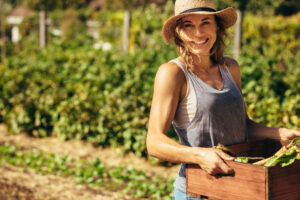 Homesteading is a lifestyle choice that centers around living off the land and creating a self-sufficient homestead. It is a return to a simpler way of life, where individuals or families aim to produce a significant portion of their own food, generate energy sustainably, and reduce reliance on commercial products. Homesteading involves a variety of practices, including gardening, raising livestock, preserving food, and utilizing renewable energy sources.
Homesteading is a lifestyle choice that centers around living off the land and creating a self-sufficient homestead. It is a return to a simpler way of life, where individuals or families aim to produce a significant portion of their own food, generate energy sustainably, and reduce reliance on commercial products. Homesteading involves a variety of practices, including gardening, raising livestock, preserving food, and utilizing renewable energy sources.
The History of Homesteading
Homesteading has a rich history deeply rooted in the United States. In the 19th century, the Homestead Act of 1862 was enacted, which granted free land to those willing to settle and develop it. This act encouraged pioneers to venture into the frontier and create their own self-sufficient homesteads. While the concept of homesteading has evolved over time, the principles of self-sufficiency and sustainable living remain at its core.
The Homestead Act opened up opportunities for thousands of ambitious pioneers to start a new life away from crowded cities. Many took advantage by staking free land claims and building homesteads from scratch using raw materials available on site. Despite the enormous challenges, homesteading offered freedom, self-reliance, and a chance to live off the fruits of one’s own labor.
Benefits of Homesteading
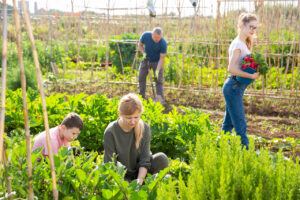
Homesteading offers a multitude of benefits for those who choose to embrace this lifestyle. Firstly, it provides a sense of fulfillment and empowerment as you become more self-reliant and in control of your own sustenance. By growing your own food, you can enjoy fresh, organic produce and reduce your exposure to harmful chemicals often found in commercial agriculture. Homesteading also promotes a healthier lifestyle through physical activity and a connection to nature.
Furthermore, homesteading offers financial benefits. By producing your own food and reducing reliance on the market, you can save money on grocery bills. Additionally, homesteading can be a source of income through selling surplus produce, homemade goods, or even hosting educational workshops on sustainable living.
The self-sufficient nature of homesteading leads to financial freedom and security. Relying less on external systems lowers expenses and provides insulation against economic downturns. Furthermore, homesteaders develop versatile skill sets that open up income opportunities.
Getting Started with Homesteading
Before embarking on your homesteading journey, it’s essential to consider several factors to ensure a successful and enjoyable experience. One of the first steps is choosing the right property. Look for land that is suitable for gardening, raising livestock, and meets your specific needs. Consider factors such as soil quality, water availability, climate, and zoning regulations.
Once you’ve acquired the right property, it’s crucial to plan your homestead carefully. Create a layout that includes designated areas for gardens, animal shelters, and living spaces. Take into account factors such as sunlight exposure, wind patterns, and the flow of water on your land. A well-thought-out plan will maximize the efficiency and productivity of your homestead.
Conducting thorough research is imperative when selecting land for a homestead. Visit the property during different seasons to assess factors like water sources, soil fertility, sun exposure, and microclimates. Consulting with local farmers can provide valuable insight.
Essential Skills for Homesteading
 Homesteading requires a diverse set of skills, and acquiring these skills will greatly contribute to your success. First and foremost, gardening is a fundamental skill for growing your own food. Learn about crop rotation, soil preparation, seed saving, and organic pest control techniques. Additionally, gaining knowledge in animal husbandry is crucial if you plan to raise livestock. Understand the needs of the animals, proper housing, and how to care for their health.
Homesteading requires a diverse set of skills, and acquiring these skills will greatly contribute to your success. First and foremost, gardening is a fundamental skill for growing your own food. Learn about crop rotation, soil preparation, seed saving, and organic pest control techniques. Additionally, gaining knowledge in animal husbandry is crucial if you plan to raise livestock. Understand the needs of the animals, proper housing, and how to care for their health.
Other important skills include food preservation techniques such as canning, dehydrating, and fermenting. These skills will allow you to extend the shelf life of your harvest and reduce food waste. Learning about sustainable energy sources, such as solar power or wind turbines, can help you become less dependent on the grid and reduce your environmental impact.
Homesteading requires a “Jack of all trades” mentality. Skills like carpentry, plumbing, electrical work, and mechanical repair allow you to build structures and maintain systems independently. Investing time into learning these skills is valuable.
Building Your Homestead Infrastructure
Building the necessary infrastructure is a vital step in establishing your homestead. Constructing functional and durable structures will ensure the longevity and efficiency of your operations. Building a greenhouse or cold frames can extend your growing season, while chicken coops, barns, and fences are essential for animal husbandry.
It’s also important to set up a reliable water system, including rainwater harvesting and irrigation methods. Installing renewable energy systems, such as solar panels, can provide electricity for your homestead. Remember to research local building codes and obtain necessary permits before starting any construction.
When designing your homestead’s infrastructure, focus on resilience and multifunctionality. Use materials like stone, brick, and metal that withstand weather extremes. Build structures like sheds and barns that serve several purposes to maximize use of space and resources.
Growing Your Own Food
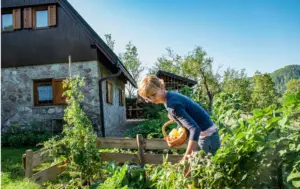 One of the most rewarding aspects of homesteading is growing your own food. Start by planning and preparing your garden beds, taking into consideration the specific requirements of different crops. Opt for organic and heirloom seeds to ensure the quality of your produce. Implement sustainable gardening practices, such as composting and mulching, to enrich the soil and minimize water usage.
One of the most rewarding aspects of homesteading is growing your own food. Start by planning and preparing your garden beds, taking into consideration the specific requirements of different crops. Opt for organic and heirloom seeds to ensure the quality of your produce. Implement sustainable gardening practices, such as composting and mulching, to enrich the soil and minimize water usage.
Experiment with various gardening techniques, including raised beds, companion planting, and vertical gardening, to maximize your yield and efficiently use space. Engage in crop rotation to maintain soil fertility and prevent disease buildup. With dedication and patience, you’ll soon enjoy the bountiful harvest from your own backyard.
Focus on cultivating staple crops that provide maximum sustenance and storage capability. Potatoes, winter squash, onions, garlic, carrots, and beans are excellent choices. Also plant nutrient-dense greens, herbs, and fruit trees suited for your growing zone.
Raising Livestock
Raising livestock can provide you with a sustainable source of meat, dairy, and eggs. Start small and choose animals that suit your property and personal preferences. Chickens are a popular choice due to their low maintenance and ability to provide eggs. Goats can provide milk, while pigs and cows can be raised for meat.
Ensure that you provide appropriate housing, feed, and medical care for your animals. Research and follow ethical animal husbandry practices to ensure their well-being. Remember that raising livestock requires commitment and a deep understanding of their needs.
Heritage breed livestock are ideal for the homestead. These animals thrive on pasture grazing, withstand weather extremes, exhibit natural immunity, and require minimal specialized care. Do extensive research to select breeds suited specifically to your climate and property.
Sustainable Energy Sources
 Reducing reliance on traditional energy sources is an important aspect of homesteading. Implementing sustainable energy solutions can help you lower your carbon footprint and reduce monthly expenses. Solar panels are a popular choice for generating electricity, especially in areas with ample sunlight. Wind turbines can also be a viable option, particularly in regions with consistent wind patterns.
Reducing reliance on traditional energy sources is an important aspect of homesteading. Implementing sustainable energy solutions can help you lower your carbon footprint and reduce monthly expenses. Solar panels are a popular choice for generating electricity, especially in areas with ample sunlight. Wind turbines can also be a viable option, particularly in regions with consistent wind patterns.
Evaluate your energy needs and consider the renewable resources available in your location. Many homesteaders also incorporate energy-efficient practices into their lifestyle, such as using energy-saving appliances, LED lighting, and practicing mindful energy consumption.
The most resilient homestead energy systems combine multiple complementary renewable sources like solar, wind, and microhydropower. This provides redundancy if one system becomes nonfunctional. Investing in high-quality components and professional installation is recommended.
Preserving and Storing Food
Preserving and storing food is essential to make the most of your harvest and maintain self-sufficiency throughout the year. Explore different methods such as canning, dehydrating, fermenting, and freezing. Each technique has its benefits and can be used for various types of food.
Invest in quality food storage containers, such as mason jars, vacuum-sealed bags, or a chest freezer. Label and date your preserved items for easy organization and consumption rotation. With proper food preservation, you can enjoy the flavors of your garden even during the winter months.
Accurate record keeping is vital when preserving homestead food. Log details like food type, processing method, cook time, storage container, and date. This allows you to replicate successful techniques and avoid food spoilage issues.
Homesteading Challenges
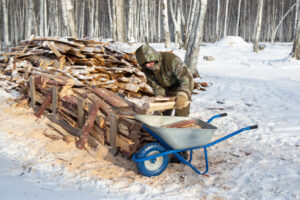 While homesteading can be a fulfilling lifestyle, it also comes with its fair share of challenges. Weather conditions can affect crop yields, and pests or diseases can threaten your harvest. Animal care requires dedication and knowledge, as health issues may arise. Additionally, the initial setup costs and time investment can be significant.
While homesteading can be a fulfilling lifestyle, it also comes with its fair share of challenges. Weather conditions can affect crop yields, and pests or diseases can threaten your harvest. Animal care requires dedication and knowledge, as health issues may arise. Additionally, the initial setup costs and time investment can be significant.
It’s important to approach homesteading with realistic expectations and a willingness to learn from both successes and setbacks. Joining homesteading communities, attending workshops, and connecting with experienced homesteaders can provide valuable support and guidance along your journey.
Adopting an attitude of flexibility and acceptance is key to overcoming homesteading challenges. Unpredictable factors like weather and pests are inevitable. Roll with setbacks as learning experiences rather than failures. Every challenge makes you wiser and more resilient over time.
Conclusion
Homesteading is a rewarding lifestyle that allows individuals and families to live sustainably, be self-reliant, and connect with nature. By embracing homesteading, you can cultivate your own food, raise animals, generate sustainable energy, and reduce reliance on external resources. While challenges may arise, the benefits of homesteading, including increased self-sufficiency, financial savings, and a healthier lifestyle, make it a worthwhile endeavor.
FAQs
1. How much land do I need for homesteading?
The amount of land you need depends on your goals and the level of self-sufficiency you desire. Generally, a few acres of land can be sufficient for a small homestead, but larger properties offer more possibilities.
2. Can I homestead in an urban area?
Homesteading in urban areas is possible, although it comes with unique challenges. Utilizing small spaces, such as balconies or rooftops, for container gardening and raising small animals like chickens can be a great start. See my article on Urban Homesteading that goes into this in more detail.
3. Do I need previous farming experience to start homesteading?
While previous farming experience can be helpful, it is not a requirement. Homesteading is a journey of learning and acquiring new skills. Take advantage of resources, workshops, and online communities to gain knowledge and practical skills.
4. How long does it take to become self-sufficient through homesteading?
Becoming completely self-sufficient takes time and depends on various factors, including your land size, resources, and level of commitment. It is a gradual process that requires continuous learning and adaptation.
5. Can homesteading be a full-time occupation?
Homesteading can be a full-time occupation if you choose to make it so. Many homesteaders dedicate their time and efforts to maintaining their land, animals, and gardens. However, some homesteaders balance homesteading with other part-time or remote work to supplement their income.
In conclusion, homesteading offers a path to self-sufficiency, sustainability, and a deeper connection with nature. By embracing this lifestyle, individuals and families can enjoy the rewards of growing their own food, raising animals, and reducing their environmental impact. Whether you have a small backyard or a large rural property, homesteading provides a fulfilling and meaningful way of life.
